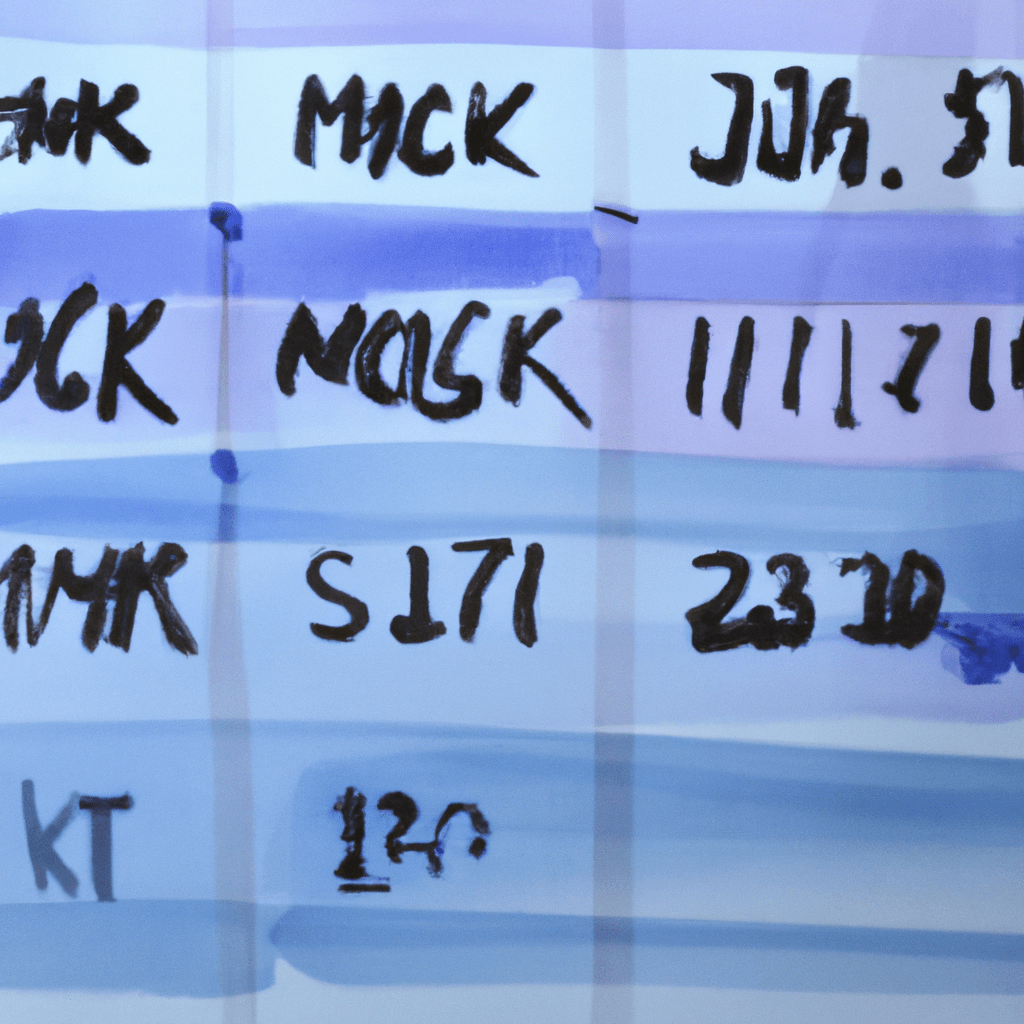Financial derivatives are complex financial instruments that have become increasingly popular in today's investment landscape. From futures contracts to options, these instruments offer investors the opportunity to profit from price movements in various underlying assets, such as stocks, commodities, and currencies. However, for beginners, navigating the world of financial derivatives can be intimidating and overwhelming. That's why we have created this comprehensive beginner's guide to help you understand the basics of financial derivatives and how to get started in stock derivatives trading. In this article, we will explore the key concepts and terminology associated with financial derivatives, delve into the intricacies of futures contracts, and provide a step-by-step guide to successful trading in futures and options. Whether you are a novice investor looking to expand your knowledge or an experienced trader seeking to enhance your trading strategies, this article will serve as your go-to resource for all things related to financial derivatives. So, let's dive in and unlock the potential of futures and options trading together.
1. “Understanding Financial Derivatives: A Comprehensive Beginner’s Guide”

Financial derivatives are complex financial instruments that derive their value from an underlying asset or index. These instruments play a crucial role in modern financial markets, allowing investors to hedge against risks, speculate on price movements, and enhance their investment strategies. However, for beginners, understanding financial derivatives can be quite challenging. Therefore, this comprehensive beginner's guide aims to demystify the world of financial derivatives and provide a solid foundation for individuals looking to explore this fascinating field.
One of the most common types of financial derivatives is a futures contract. A futures contract is an agreement between two parties to buy or sell an asset at a predetermined price and date in the future. It enables investors to speculate on the future price of the underlying asset, such as commodities, currencies, or stock market indices. Futures contracts are standardized and traded on organized exchanges, providing liquidity and transparency to market participants.
Options are another type of financial derivative that gives the holder the right, but not the obligation, to buy or sell an asset at a specified price within a specific time frame. There are two types of options: call options, which give the holder the right to buy the underlying asset, and put options, which give the holder the right to sell the underlying asset. Options provide investors with flexibility and allow them to manage risk effectively.
Stock derivatives are financial instruments that derive their value from individual stocks. These derivatives include options, futures contracts, and various other structured products. Stock derivatives offer investors the opportunity to gain exposure to a particular stock without owning it outright, making them a popular choice for hedging and speculative purposes.
Trading financial derivatives involves a range of strategies and techniques that require a solid understanding of the underlying markets and instruments. It is essential for beginners to familiarize themselves with concepts such as leverage, margin requirements, and risk management techniques. Additionally, it is crucial to conduct thorough research and analysis before engaging in derivatives trading, as it can be highly volatile and potentially risky.
In conclusion, financial derivatives are powerful tools that offer investors a range of opportunities in the global financial markets. This comprehensive beginner's guide has provided an overview of key concepts such as futures contracts, options, and stock derivatives. By understanding these instruments and their potential applications, beginners can navigate the world of financial derivatives with confidence and make informed investment decisions. Whether it's for risk management, speculation, or enhancing investment strategies, financial derivatives can be valuable additions to an investor's toolkit.
2. “Exploring Futures Contracts: How to Get Started in Stock Derivatives Trading”

Exploring Futures Contracts: How to Get Started in Stock Derivatives Trading
Financial derivatives, such as futures contracts, play a crucial role in modern financial markets. They allow investors to speculate on the future price movements of various assets, including stocks, commodities, and currencies. Futures contracts, in particular, provide traders with an opportunity to participate in stock derivatives trading. In this section, we will provide a beginner's guide to futures and options trading, equipping you with the necessary knowledge to get started in this exciting and potentially lucrative market.
Firstly, let's clarify what a futures contract is. A futures contract is a legally binding agreement between two parties to buy or sell an underlying asset at a predetermined price and date in the future. These contracts are standardized and traded on regulated exchanges, ensuring transparency and liquidity. In the context of stock derivatives, futures contracts allow traders to speculate on the future price of a specific stock without owning the underlying shares.
To begin trading futures contracts, it is essential to understand the basic components involved. Firstly, you need to select the stock or index on which you want to trade the futures contract. This can be done by conducting thorough research and analysis, considering factors such as market trends, company performance, and economic indicators. Once you have chosen the underlying asset, you need to decide whether you want to buy or sell the futures contract.
If you believe the price of the stock will increase in the future, you would enter into a long position, which means buying the futures contract. On the other hand, if you anticipate a decline in the stock's price, you would take a short position by selling the futures contract. It is important to note that futures contracts have expiration dates, after which the contract settles, either through physical delivery of the underlying asset or in cash.
To get started in stock derivatives trading, it is crucial to open an account with a reputable brokerage firm that offers futures and options trading services. Ensure that the brokerage provides access to the specific futures contracts you are interested in, along with robust trading platforms and educational resources. These platforms often offer real-time market data, charting tools, and risk management features, empowering you to make informed trading decisions.
Before diving into live trading, it is strongly recommended to familiarize yourself with the mechanics of futures contracts through practice trading using a demo account. This allows you to gain hands-on experience without risking real capital. Additionally, take advantage of the educational resources provided by your brokerage or other reputable sources. Learn about fundamental and technical analysis, risk management strategies, and the intricacies of futures options trading.
In conclusion, futures contracts offer an avenue for investors to participate in stock derivatives trading. By understanding the basics of futures trading, selecting a reliable brokerage, and educating yourself on the intricacies of this market, you can embark on a journey to potentially profit from the price movements of stocks and other underlying assets. Remember to always conduct thorough research and approach futures trading with a disciplined and risk-aware mindset. With dedication and practice, you can navigate the world of financial derivatives and forge a successful trading career.
3. “Mastering Futures and Options: A Step-by-Step Guide to Successful Trading”

"Mastering Futures and Options: A Step-by-Step Guide to Successful Trading"
When it comes to financial derivatives, futures and options are two of the most widely used instruments. These derivatives allow investors to speculate on the future price movements of various underlying assets, such as stocks, currencies, commodities, and more. However, diving into the world of futures and options trading can be daunting for beginners. That's where the book "Mastering Futures and Options: A Step-by-Step Guide to Successful Trading" comes in.
This comprehensive guide is designed to provide novice traders with a solid foundation in understanding and trading futures and options. Written by seasoned professionals in the field, the book covers everything from the basics to advanced strategies, making it an ideal resource for beginners looking to navigate the complex world of financial derivatives.
The book starts by explaining the fundamental concepts of futures and options, including how they differ from traditional stock trading and how they are used to manage risk. It then delves into the mechanics of futures and options contracts, explaining the various terms, symbols, and trading strategies involved. This step-by-step approach ensures that readers grasp the core concepts before moving on to more complex topics.
One of the strengths of "Mastering Futures and Options" is its emphasis on practical application. The authors provide real-world examples and case studies to illustrate the concepts discussed, allowing readers to see how these derivatives are used in actual trading scenarios. By learning from the experiences of successful traders, beginners can gain valuable insights and avoid common pitfalls.
Moreover, the book also covers the key factors that influence futures and options pricing, such as supply and demand dynamics, interest rates, and market volatility. Understanding these factors is crucial for making informed trading decisions and managing risk effectively.
Whether you are interested in trading futures or options, this beginner's guide provides a solid foundation for success. From understanding the basics to implementing advanced strategies, "Mastering Futures and Options" equips readers with the knowledge and tools necessary to navigate the complex world of financial derivatives. Whether you are a novice trader or an experienced investor looking to expand your portfolio, this book is a valuable resource that can help you master the art of futures and options trading.
In conclusion, "Mastering Futures and Options: A Step-by-Step Guide to Successful Trading" is a comprehensive resource that caters to beginners seeking to enter the world of financial derivatives. By providing a clear and practical approach to understanding and trading futures and options, this book equips readers with the necessary knowledge and strategies to succeed in this complex domain.
In conclusion, financial derivatives, particularly futures contracts and options, offer a wide range of opportunities for individuals looking to engage in stock derivatives trading. This comprehensive beginner's guide has provided a step-by-step understanding of financial derivatives, from their basic concepts to more advanced trading strategies. Whether you are a novice or an experienced trader, mastering futures and options can significantly enhance your trading skills and potentially generate substantial profits. By utilizing the knowledge gained from this article, individuals can confidently navigate the world of futures and options trading, making informed decisions and maximizing their investment potential. So, whether you are interested in stock derivatives or other forms of financial derivatives, this beginner's guide is a valuable resource to help you embark on a successful trading journey.





